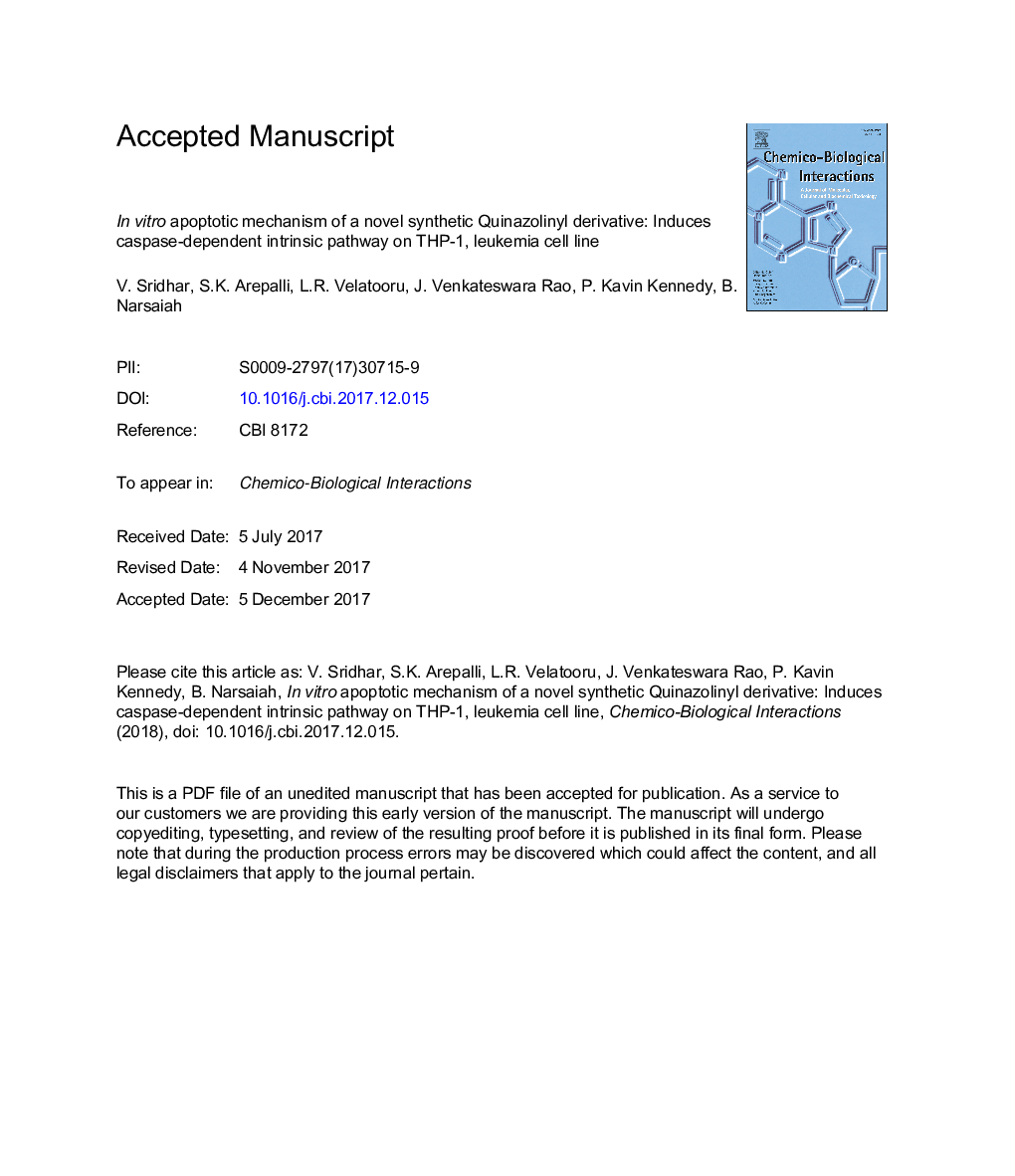| Article ID | Journal | Published Year | Pages | File Type |
|---|---|---|---|---|
| 8545243 | Chemico-Biological Interactions | 2018 | 36 Pages |
Abstract
Several quinazoline derivatives have been found to possess a broad spectrum of biological activities. Previously our research group has synthesized and studied the anti-proliferative effects of N-Decyl-N-(2-Methyl-4-Quinazolinyl) Amine (DMQA). The current study evaluated the cytotoxic and apoptotic properties of DMQA in THP-1 cells. The cytotoxic potential of DMQA was assessed using MTT assay on a panel of cancer cell lines which include HeLa, Mia PaCa-2, A 375, B16-F10, A 549,A 431, U937, THP-1, HL-60 and peripheral blood mononuclear cells (PBMC's). Preliminary data revealed that the highest cytotoxic activity was against THP-1 leukemia cell line (IC50=0.66 μg/ml). The apoptotic properties of DMQA on THP-1 cells were characterized by change in nuclear morphology, DNA fragmentation, reduction of pro-caspases-3, 9, Bax/Bcl-2 levels, cleavage of poly (ADP-ribose) polymerase and cytosolic release of cytochrome c. Further investigation revealed a sub-G1 peak, phosphatidyl serine exposure and loss of mitochondrial membrane potential (MMP) in THP-1 cells. The role of caspases was crucial and was demonstrated by the inhibitors Z-VAD-FMK and Z-DEVD-FMK. Moreover DMQA was markedly less effective in inhibiting the growth of normal cells (PBMC's, IC50 =62.17 μg/ml). Based on the results we suggest that DMQA induced apoptosis via intrinsic pathway and could be a promising anticancer agent.
Related Topics
Life Sciences
Environmental Science
Health, Toxicology and Mutagenesis
Authors
Sridhar Vakamullu, S.K. Arepalli, L.R. Velatooru, Venkateswara Rao J., Kavin Kennedy P., Narsaiah B.,
